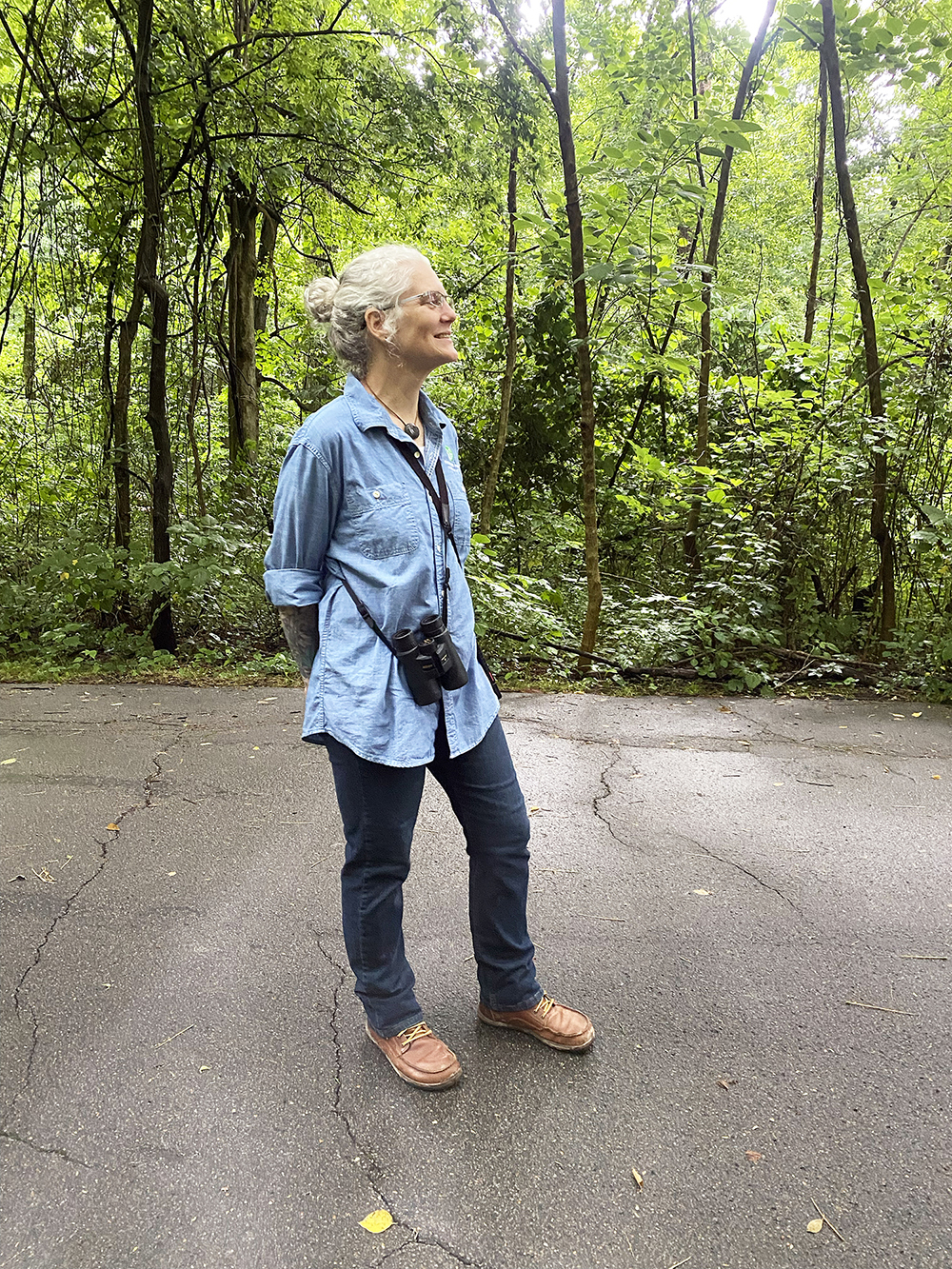“I’ve been walking in this park since the late 1980s. I grew up in Memphis, so I know every trail. When I was young, my first dog got swept down Lick Creek into the zoo. I have so many memories. But all of us who work here at the park have a passion for connecting people with nature … Oh, a white-eyed vireo! … Listen. Chick-breeyou-chick. They’re my favorites. They are such comedians!”
Fields Falcone is the rare person who can carry on a human conversation, identify an avian song and mimic it, and then return to speaking English without missing a beat. Her title is stewardship manager for the Overton Park Conservancy, but she is a scientist/avian biologist who’s conducted field and lab work as far away as the Marianas Islands and as near as the Memphis Zoo. Today, she is taking an amateur bird-lover — namely me — on a bird walk in the park’s Old Forest.
“There are only three urban old-growth forests in the country,” says Falcone. “We manage the habitat here mostly by invasive species removal and by trying to control how many trails there are. Beyond that, it’s so ancient that it’s a perfect habitat for many interior forest birds. During the spring and fall migrations many species stop in for a snack, then move on after a few days to bigger wooded areas like the Wolf River or Hatchie River or T.O. Fuller — or further north to their breeding grounds. … Oh, that’s an eastern wood peewee. … Its song is so plaintive.”
In addition to its migratory visitors, which offer “some of the best birding in Memphis,” Overton Park has a healthy population of resident and migratory breeding species, and Falcone appears acutely aware of all of them. “We do a lot of birding by ear,” she says. “And really, when we’re doing a survey, vocals tend to be more valuable, especially song versus call. It’s of higher value than even a perfect picture because it is the true genetic imprint of the bird.”
We both have our Merlin bird-identification phone apps turned on as we walk, careful to keep our footsteps as quiet as possible. It’s a necessary tool for me, and probably of more use as a backup identifier for Falcone.
“Merlin is great, and accessible for everyone,” she says. I’m reassured, and chance a guess at a song echoing through the treetops.
“Isn’t that a robin?”
“No, that’s a red-eyed vireo,” Falcone says. “It sounds like a robin on helium.” Well, sure. I knew that.
“And that’s a great crested flycatcher,” she says, head turned to the lower branches. “Breeep, breep. It’s pretty birdy today, even though most of the spring migration period is over. I wasn’t sure it would be.”
There will soon be some new territory between the zoo and the forest opening up for Old Forest trail walkers, thanks to a land-use compromise that finally ends occasional zoo parking on the park’s Greensward.
“We’re going to have some lovely new trails,” says Falcone. “Bob’s Trees and Trails has already mapped the area. We got a federal grant with the help of Congressman Cohen to help settle the final plans on the Greensward. The zoo got a chunk, the city got a chunk, and Overton Park got a chunk. We’re designing a loop trail around the Greensward and there will finally be no parking there. We have a great relationship with Matt Thompson, the zoo CEO.”
A young couple, each carrying binoculars, approaches. They are smiling, and say something to Falcone but I don’t catch it. “Ooh,” she says, “They heard a black-throated green warbler. They make this insane, brilliant, lovely song — gee, geegeegee — but they’re only here for migration.”
And I’m only here for this awesome bird walk (and my daily dog walks), but I urge you to check Overton Park’s calendar for nature programs, tai chi, science cafe, and other activities. It’s a great respite from the city’s heat and hustle. And if you’re lucky, you might even run into the remarkable Fields Falcone. If you do, tell her Bruce says, “breeep.”
